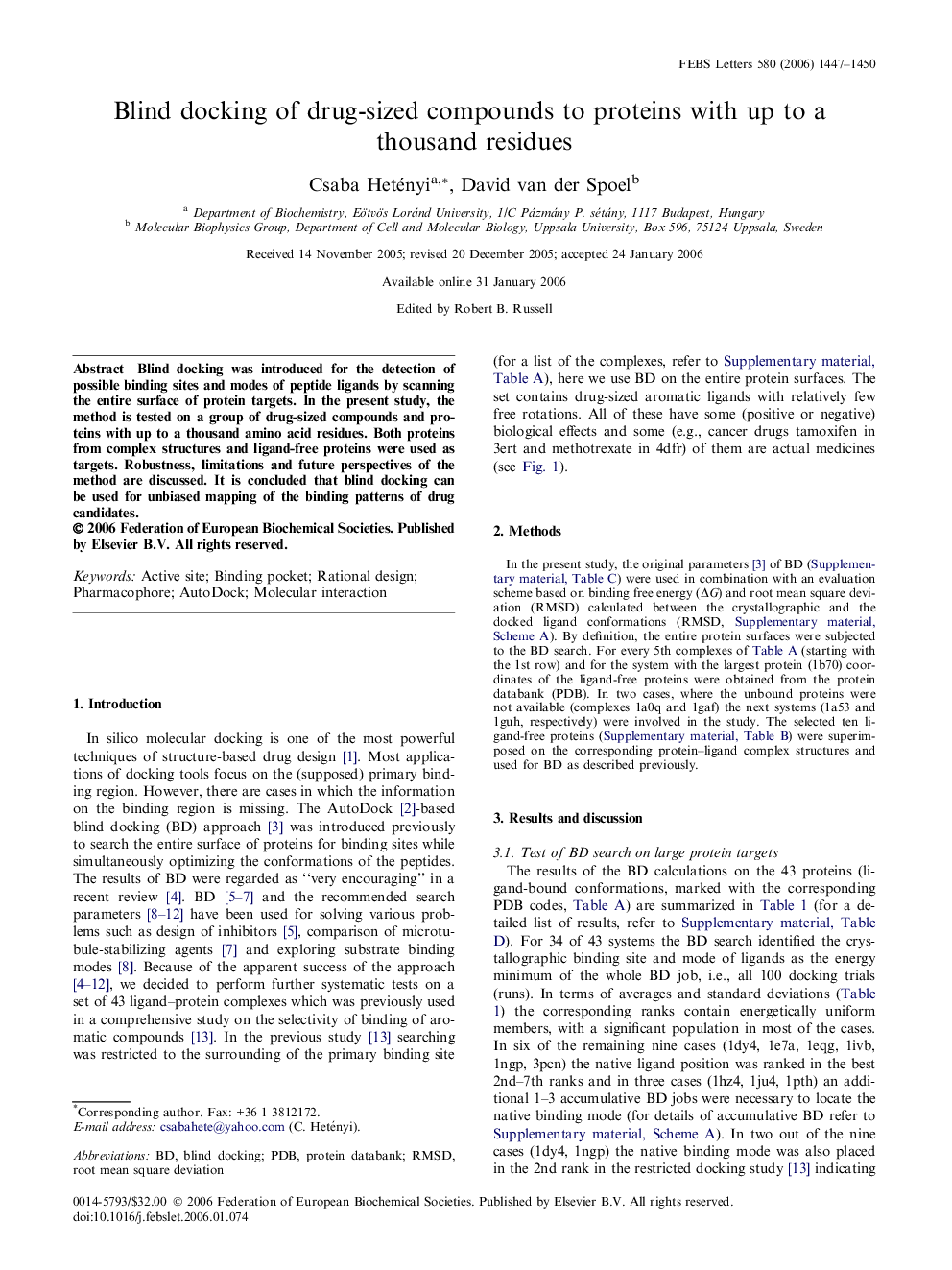| Article ID | Journal | Published Year | Pages | File Type |
|---|---|---|---|---|
| 2051666 | FEBS Letters | 2006 | 4 Pages |
Abstract
Blind docking was introduced for the detection of possible binding sites and modes of peptide ligands by scanning the entire surface of protein targets. In the present study, the method is tested on a group of drug-sized compounds and proteins with up to a thousand amino acid residues. Both proteins from complex structures and ligand-free proteins were used as targets. Robustness, limitations and future perspectives of the method are discussed. It is concluded that blind docking can be used for unbiased mapping of the binding patterns of drug candidates.
Keywords
Related Topics
Life Sciences
Agricultural and Biological Sciences
Plant Science
Authors
Csaba Hetényi, David van der Spoel,
